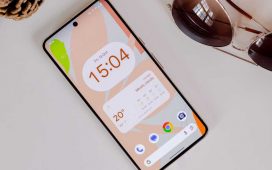
Bad news for anyone who got their hopes up that Sony was about to give fans their first look at the upcoming PlayStation 5 – let alone discuss pricing or a release date – as the company instead used its Road to PS5 livestream for an in-depth technical breakdown of the console’s SSD, GPU, and 3D audio capabilities.
To be fair, for anyone paying attention that shouldn’t have been a surprise. Lead Systems Architect Mark Cerny’s talk was originally intended for the Game Developers Conference that would have taken place around this time were it not for coronavirus, so the expected audience was always game devs and publishers rather than fans.
For those who did tune in, the hour-long stream mostly confirmed the few specs we already knew while doubling down on some specifics.
Take the SSD. We always knew the PS5 would have SSD storage at its heart, but Cerny confirmed that it would be a 5.5Gb/s drive with 12 channels, and a capacity of 825GB – a slightly odd number, but one that Cerny says delivers the best bang for your buck and is intended to help keep prices down. It will be backed up by 16GB GDDR6 RAM.
What does all that mean in practice to players, beyond the numbers? Far faster load times for one, and quicker installs for patches. Perhaps more excitingly, it frees developers from the kind of workaround they usually use to avoid loading too much too fast, allowing for more natural level design (no more windy corridors to block your view) and faster movement speeds (no need to slow you down so that the world can load up first).
Those who want to expand storage will have what seems like a better, more consumer-friendly approach than that taken by Microsoft’s custom storage cards. Instead the PS5 will be compatible with off-the-shelf internal M.2 storage – likely cheaper than Microsoft’s custom cards – though the caveat is that only certain M.2 drives will be compatible. Sony says it isn’t even expecting to be able to give a list of compatible cards at launch, as the ones that are fast enough aren’t even likely to release until the end of this year, so there may be a little wait to bump storage up beyond the base specs.
As for the GPU and CPU, Cerny mostly confirmed what we already knew – they’ll be custom chips designed in collaboration with AMD, with some of the developments likely to filter back into AMD’s PC chips – but did give some tech specs. The GPU will be capped at 2.23GHz (delivering 10.3 teraflops, for the flops fans) with the CPU at 3.5GHz.
Going by teraflops at least, that’s on paper slower than the Xbox Series X‘s 12, but Cerny had an answer ready. While Microsoft’s figures represent the console’s performance at peak, the PS5 will supposedly stay near max speeds all the time, so will in theory deliver more consistently powerful performance, especially for GPU-heavy tasks like real-time ray tracing.
Finally, 3D audio. This is where Cerny really lost me, I’ll admit, digging deep into the science of sound. But there are three core principles at play: the PS5 will deliver 3D audio and virtual surround sound for all players (not just those who purchase licensed Dolby Atmos peripherals or the like), that it will allow all audio to be 3D-mapped, and that this will in turn drive up players’ sense of being in the game – and where sounds come from within that game.
Still, Cerny admitted this is a work-in-progress. Support for headphones is apparently all-but finished, with the team currently working on full support for TV speakers and stereo setups, before moving onto 5.1 and more. Quality will also depend on the makeup of your own ear, so at launch there will be five different audio profiles to pick from, with a test at setup to help you pick the perfect profile for your hearing.
All of that sounds pretty great, but it’s hard not to question Sony’s approach here. Microsoft has been open and transparent with fans so far, revealing core specs and the design, discussing concrete features, and making sure that everyone already knows roughly what to expect when its console launches this Christmas.
By contrast Sony has kept its cards close to its chest, and developer-focused events like this will do little to appease fans worried that Sony doesn’t have anything solid to show off yet.













